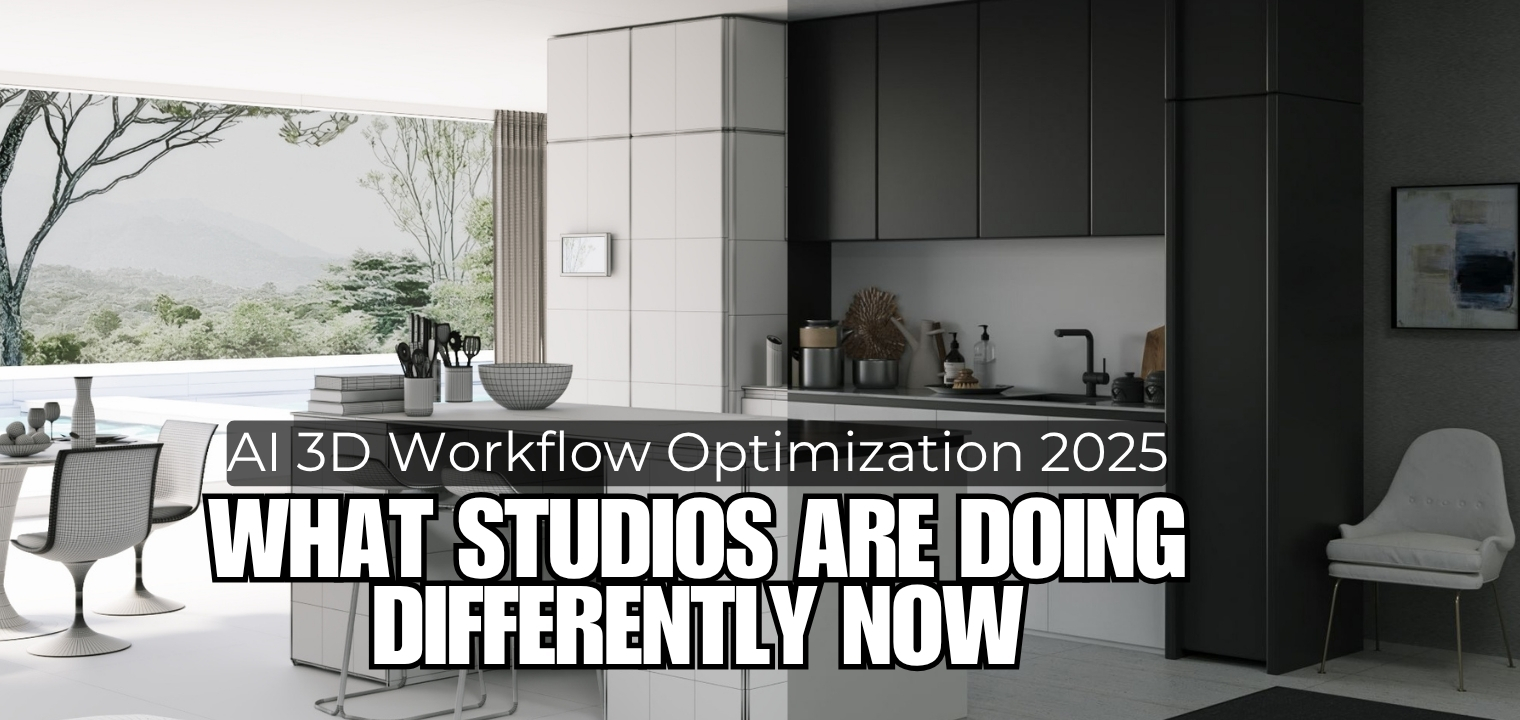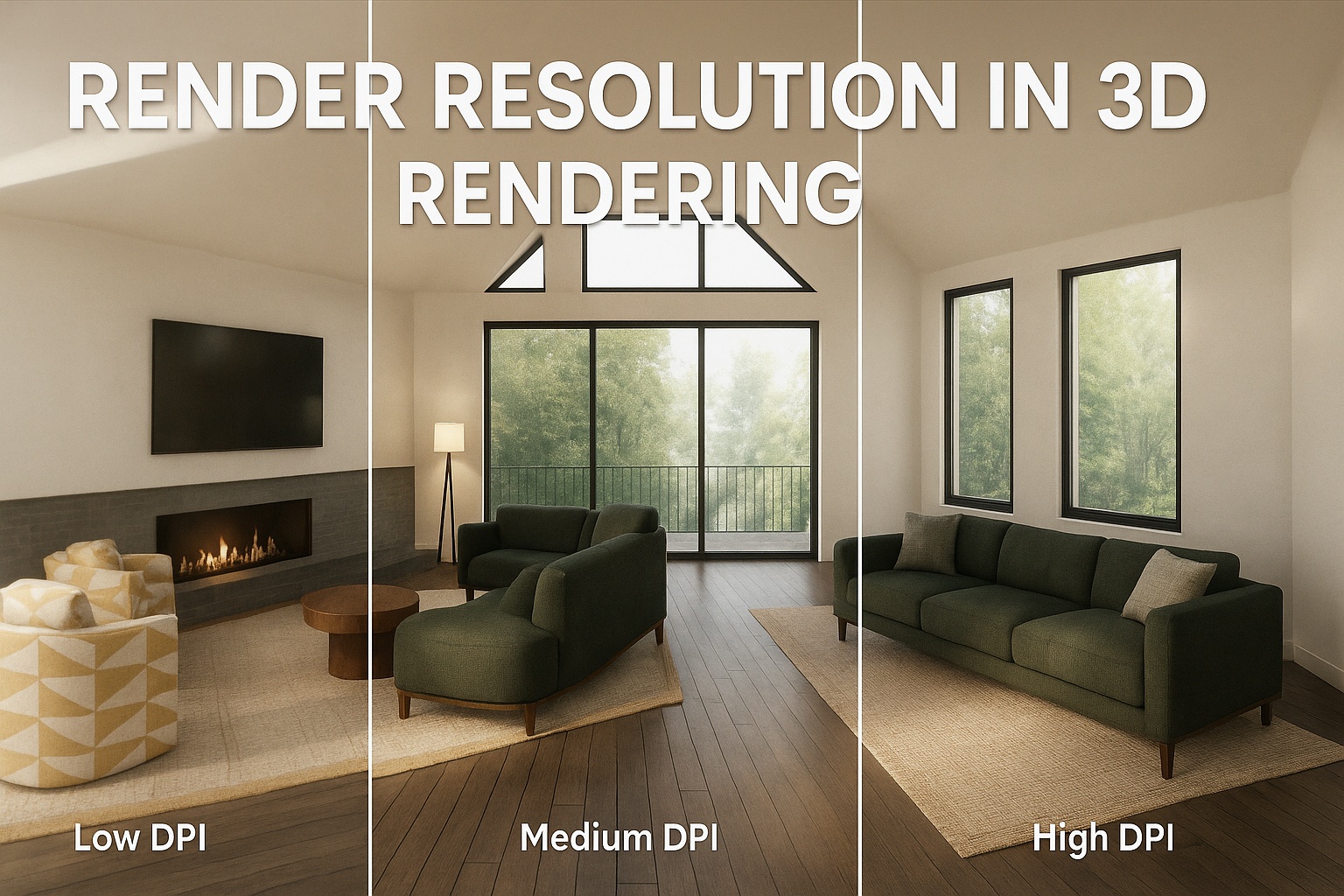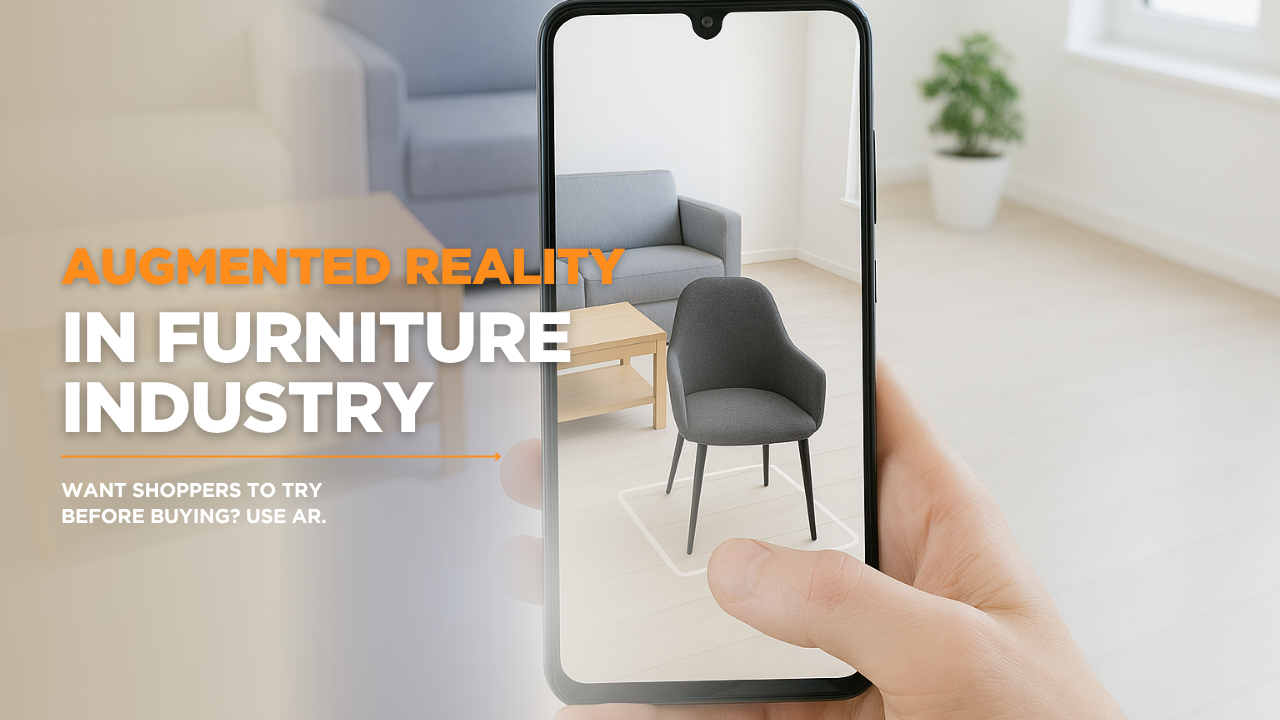What is 3D CGI in a sentence?
In a world dominated by digital media, from blockbuster films to video game landscapes, a specific term often surfaces, capturing the essence of our visual experience: 3D CGI Rendering. CGI, which stands for Computer Generated Imagery, refers to creating graphical content using computing power.
None of these images you will see throughout the post are real. They are all 3D CGI Rendering. Created by our 3D Artists at 7CGI studio. We created these for furniture brands, jewelry companies, Interior Designers, Real estate companies, homeowners, gaming companies, Clothing resellers, phone brands, cosmetics brands, and many other consumer products brands as if anyone can benefit from 3D CGI Rendering.
A Brief History of 3D CGI
1960s: The first known instance of computer animation was created in 1961 by Edward E. Zajac. It was a simple simulation of a two-gyro gravity-gradient attitude control system. In 1963, Ivan Sutherland introduced “Sketchpad,” often considered the first computer graphics program. It allowed users to manipulate visual objects in real-time. In this early age, only the film industry used 3D CGI in its production. Some argue that the Aerospace industry would also use the tech for flight simulators, providing pilots with a rudimentary visual interface for training.
In the 1970s Automotive industry started using computer-aided design (CAD) tools, marking the initial stages of 3D modeling for car design.
In the 1980s, Video gaming and medical imaging started using 3D CGI Rendering. 3D CGI started to become more mainstream in this decade.
In the 1990s “Jurassic Park” (1993) featured CGI-rendered dinosaurs, setting new standards for visual realism in movies. 3D Software allowed architects to create detailed 3D visualizations of structures, revolutionizing the design and presentation processes.

In the 2000s Fashion and Advertising industries joined with the others. This was when the rise of photorealism happened. Movies like “Avatar” (2009) pushed CGI to photorealistic levels.
By the 2010s, 3D CGI Rendering has become instrumental. Almost anyone with a product or idea is taking advantage of 3D CGI Rendering Technology.
Drop me a message if you are still not using 3D CGI or don’t know how to integrate 3D CGI into your pipeline.
Industries taking advantage of 3D CGI
1. Film and Entertainment Industry
Why: To create visually compelling scenes, animate characters, and fabricate worlds that would be costly or impossible to achieve with practical effects.
How: Through the use of software like Autodesk Maya, Blender, or Cinema 4D, artists model, texture, and animate 3D scenes and characters. Post-production integrates these visuals into the film.
2. Video Gaming
Why: To design immersive, interactive, and realistic game environments and characters.
How: Game engines like Unity or Unreal Engine allow developers to integrate 3D models, animations, and landscapes to create interactive experiences for players.
3. Advertising
Why: To create eye-catching visuals, showcase products in unique ways, and develop memorable commercials.
How: Ad agencies employ CGI artists to create 3D renderings of products, animate logos, or design entirely CGI-driven commercials.
4. Architecture
Why: To visualize and present architectural designs and concepts before they are built.
How: Using software like SketchUp or Revit, architects create detailed 3D models of structures, allowing clients to take virtual tours or see different design options.

CGI Exterior Rendering by 7CGI
5. Automotive Manufacturing
Why: To visualize and test car designs before producing physical prototypes.
How: Engineers use CGI software to model car designs, simulate crash tests, and even create promotional materials for upcoming vehicles.

Vehicle Rendering by 7CGI
6. Fashion and Apparel
Why: To visualize clothing designs on virtual models, saving time and resources on prototyping.
How: Designers utilize 3D modeling software to craft clothing items, which are then virtually draped on avatars to examine fit, drape, and style.

Product Rendering By 7CGI Studio
7. Medical Imaging and Healthcare
Why: To provide clear visualizations of complex biological processes, intricate surgeries, or detailed anatomical structures.
How: Medical professionals use CGI to turn data from MRI and CT scans into 3D visual models, aiding in diagnosis and treatment planning.
8. Education and Training
Why: To offer interactive learning experiences, especially for complex or dangerous subjects.
How: Educational institutions and companies employ 3D CGI Rendering to create simulations, virtual labs, or interactive modules, enhancing comprehension and engagement.
9. Real Estate and Interior Design
Why: To give potential buyers a virtual tour of properties or visualize design changes before implementing them.
How: Using software like 3ds Max, designers can model interiors, decorate spaces, or give virtual walkthroughs of yet-to-be-built homes.

Interior Rendering by 7CGI Studio
10. Aerospace and Defense
Why: To simulate flights, design aircraft, or visualize spatial missions.
How: Aerospace engineers use CGI to model aircraft designs, run flight simulations, or visualize spacecraft trajectories and landings.
How Does 3D CGI Rendering Work?
3D Computer-Generated Imagery (CGI) has become an integral part of our visual experience, whether it’s through movies, video games, advertisements, or virtual simulations. But how does this technology translate abstract digital commands into lifelike landscapes, creatures, and phenomena? Let’s take a closer look.
1. Modeling: Crafting the Base
At the heart of every CGI scene or character is a 3D model. Artists use specialized software to “sculpt” digital objects, much like how a sculptor would shape clay. These models are comprised of vertices, edges, and faces forming polygons, usually triangles or quadrilaterals.
2. Texturing: Painting the Surfaces
Once modeled, the object appears plain and lacks detail. This is where texturing comes into play. Artists wrap 2D images, called textures, around their 3D models. Imagine wrapping a gift – the paper pattern is the texture, the box shape is the model. Specular maps (for shininess), bump or normal maps (for surface detail), and displacement maps (for depth) add further realism.
3. Rigging: Giving Flexibility
For models that need to move, especially characters, a digital “skeleton” is created. This skeleton, comprised of bones and joints, allows animators to move characters by posing the skeleton rather than reshaping the model itself.
4. Animation: Breathing Life
With the model rigged, animators can start making it move. Using keyframes, animators define a model’s position, rotation, and scale at specific points in time. The software then interpolates between these keyframes, creating fluid motion.
5. Lighting: Setting the Mood
Like in traditional photography, lighting in CGI is crucial. Artists place virtual light sources within a scene to mimic real-world lighting conditions, be it the soft light of a cloudy day or the harsh shadows of a streetlamp at night. Proper lighting accentuates detail and sets the mood.
6. Rendering: Capturing the Shot
Perhaps the most computationally intensive step, rendering, is where everything comes together. Software calculates how light interacts with objects, considering textures, shadows, reflections, and more, to produce a 2D image or sequence of images. Depending on the complexity, rendering can range from seconds to days per frame.

Furniture Rendering Close Up by 7CGI
7. Simulation: Imitating Reality
Beyond traditional animation lies the world of simulation. Whether it’s water flowing, clothes fluttering, or smoke rising, these natural phenomena are governed by physics. CGI uses algorithms that mimic these laws, allowing artists to create believable, dynamic scenes without manually animating each detail.
8. Compositing: Integrating Elements
Especially in film, CGI often needs to blend with real-world footage. Compositors layer various elements, adjust color grading, and ensure the seamless integration of CGI components with live-action shots.
9. Post-Processing: The Final Polish
After rendering, additional effects like motion blur, depth of field, or color correction are added to enhance the visuals further.
3D CGI Rendering is a symphony of art and technology, merging creativity with complex algorithms to produce the visual wonders we see on screens. Its success lies not just in the software’s capabilities but in the skilled artists who wield it, pushing boundaries and crafting digital dreams into visual realities. As technology continues to advance, one can only imagine where the magic of CGI will take us next.
Since I create 3D CGI Rendering, Drop me a message at [email protected] if you are still not using 3D CGI or don’t know how to integrate 3D CGI into your pipeline. CGI is not expensive anymore. Anyone can afford it and take advantage of the technology. Take a look at the variety of work we did in the past on our diverse 3D Rendering Portfolio.
The Future of 3D CGI Rendering
3D Computer-Generated Imagery (CGI) is a powerful technology that is changing the way we interact with the world around us. In the past, CGI was mostly used in film and video games, but it is now being used in a wider range of industries, including advertising, education, and medicine.
The future of 3D CGI Rendering is very bright. Advances in technology are making it possible to create more realistic and immersive CGI experiences. Here are some of the trends that are shaping the future of 3D CGI Rendering:
Real-time rendering: Real-time rendering is a technology that allows CGI to be rendered in real time, meaning that there is no delay between the time a user interacts with a CGI scene and the time the scene is updated. This technology is becoming increasingly popular as it allows for more interactive and immersive CGI experiences.
Augmented reality (AR) integration: AR is a technology that overlays digital content onto the real world. This technology is well-suited for 3D CGI Rendering, as it allows users to interact with CGI objects in a realistic way. For example, AR could be used to create virtual shopping experiences or to provide tourists with information about their surroundings.
The rise of virtual beings: Virtual beings are computer-generated characters that can interact with humans in a realistic way. These beings are becoming increasingly popular, as they can be used for a variety of purposes, such as customer service, education, and entertainment.
The fusion of AI and CGI: AI is rapidly changing the way we create and interact with CGI. AI can be used to automate tasks, such as creating 3D models and animating characters. It can also be used to create more realistic and immersive CGI experiences.
Hyper-personalized content: CGI can be used to create personalized content that is tailored to each user’s individual preferences. This could include movies, video games, or even educational content.
Eco-friendly virtual productions: Virtual productions are movies or shows that are shot entirely in a virtual environment. This can reduce the carbon footprint of productions, as it eliminates the need for physical sets and props.
Ethical Considerations of 3D CGI, CGI Can Deceive Our Senses.
In a world saturated with digital content, 3D Computer-Generated Imagery (3D CGI Rendering) stands out as a revolutionary tool. It has transformed filmmaking, gaming, advertising, and numerous other industries. However, as the quality of CGI improves, so does its ability to deceive our eyes, brains, and even our beliefs. Let’s delve into the intriguing and sometimes unsettling aspects of this technological marvel.
1. The Era of Hyperrealism
Advances in 3D CGI software and hardware have led to the creation of visuals so realistic that they’re often indistinguishable from real-life footage or photography. From the textures of alien landscapes to the sweat on an animated character’s brow, the level of detail is staggering.
Implication: People might believe they’re seeing real events or places when, in fact, it’s all fabricated. This becomes especially relevant in contexts like documentaries or news reports where integrity and authenticity are crucial.
2. Deepfakes and Digital Doppelgängers
Deepfakes utilize advanced CGI techniques, combined with artificial intelligence, to superimpose faces onto existing video footage. This technology can make it appear as though someone has said or done something they never actually did.
Implication: Beyond the realm of celebrity face swaps or fun viral videos, deep fakes can have serious consequences, including spreading false information, political manipulation, or personal blackmail.
3. Historical and Contextual Manipulation
3D CGI Rendering can be used to recreate historical events or alter existing footage. While this is fantastic for educational purposes or historical films, it also presents the risk of misrepresenting the past.
Implication: Manipulating historical footage or creating hyper-realistic depictions can lead to skewed perceptions of events, potentially misinforming or misleading viewers.
4. Misrepresentation in Advertising
Advertisements often utilize 3D CGI Rendering to make products appear more appealing. From the impeccable whirling chocolate in a candy commercial to the flawless skin of a model in a beauty ad, CGI enhances, and sometimes completely fabricates, the product’s appearance.
Implication: Consumers might be misled into purchasing products based on unrealistic or non-existent features.
5. The Ethical Dilemmas of Virtual Beings
Today, entirely CGI-generated influencers and celebrities exist on social media platforms. These digital entities can possess lifelike appearances and personalities, amassing real human followers.
Implication: The lines between reality and virtuality blur as audiences form attachments and beliefs based on non-real entities. This raises questions about influence, authenticity, and the nature of celebrity in the digital age.
6. Safety Implications in Forensics
3D CGI Rendering can play a role in recreating crime scenes or events for juries in a courtroom. While this can provide clearer visualization, it can also potentially introduce biases or inaccuracies.
Implication: The potential for manipulated or inaccurate reconstructions can impact the outcomes of legal proceedings.
So, before you believe anything today, always be a bit skeptic. Today anything can be created in 3D, including yourself and any living or dead people. Just need some decent photographs. If you have some voice recordings of the deceased along with photos, you can make a live virtual replica of that dead man. You can make him walk or talk.
Keep in mind most of the time. You see something on the screen. You are bombarded with stuff that is not as appealing in reality as you see on the screen.
I have been running this CGI rendering company since 2015, Drop me a message at [email protected] if you are still not using 3D CGI or don’t know how to integrate 3D CGI into your pipeline. CGI is not expensive anymore. Anyone can afford it and take advantage of the technology.
A Few FAQ About 3D CGI Rendering:
1. Are All CGI 3D?
Nope, Not all CGI (Computer-generated imagery are) 3D.
2. What is the difference between CGI and 3D Animation (CGI vs 3D)?
If you make a cgi VS 3d animation comparison, CGI stands for computer-generated imagery. It is a broad term that encompasses any image that is created using a computer. This includes 3D animation, but it also includes other types of images, such as 2D animation, special effects, and simulations.
3D animation is a specific type of CGI that uses computer software to create three-dimensional models and then animate them. This can be used to create realistic characters and environments for films, video games, and other applications.
3. Is 3d animation CGI?
So, all 3D animation is CGI, but not all CGI is 3D animation.










